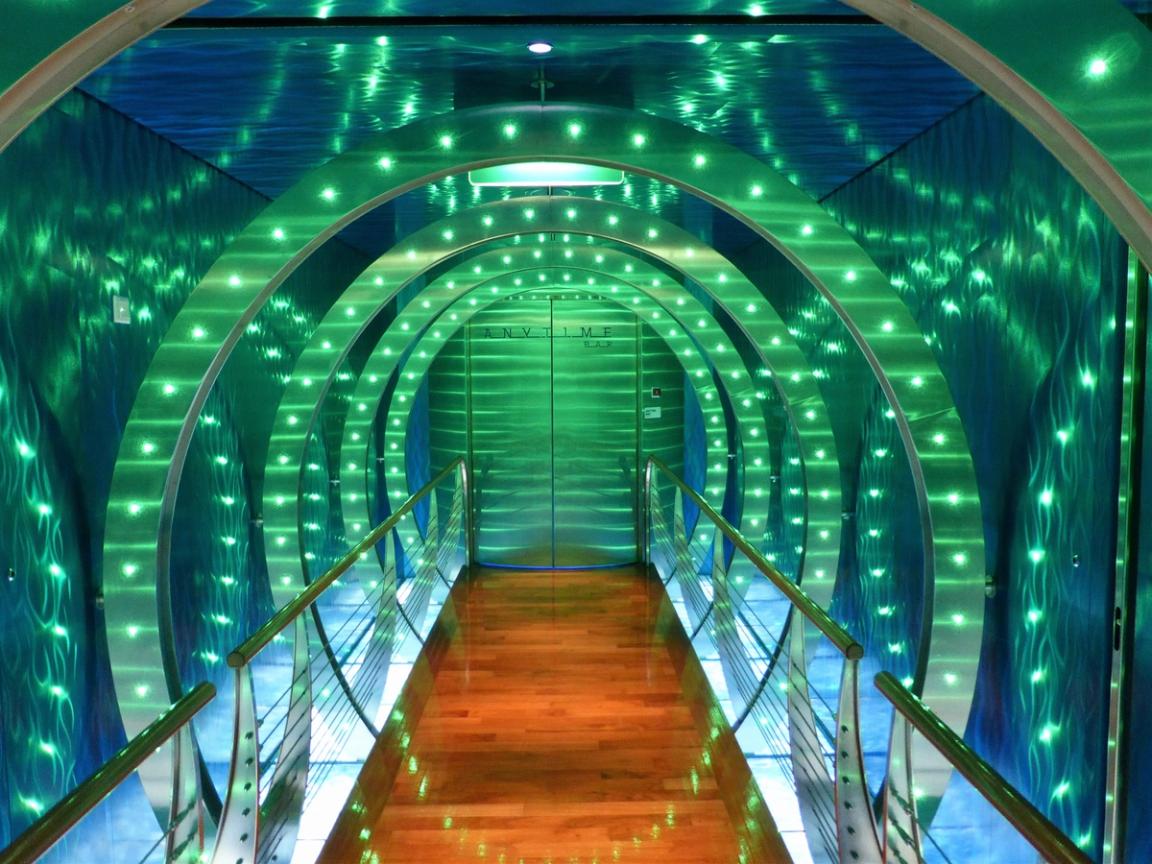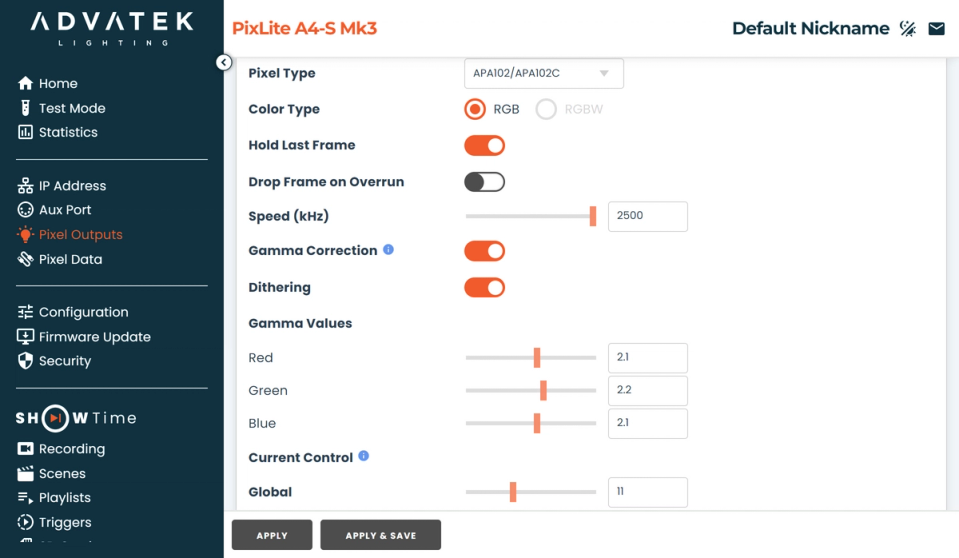
Digital Current Control
Have you ever noticed that your pixel LEDs look great with individual colors on, but they don’t perform well when the primary colors are mixed? Or perhaps you’ve noticed that the LEDs are simply too bright for a particular installation, and you’d like to limit their brightness without sacrificing your resolution for dimming and mixing colors? Some pixel LEDs offer the ability to digitally tune the current of the LEDs, which can greatly assist in solving these challenges.
With Advatek’s 3rd generation of pixel control firmware, PixLite® devices can control the current of pixel LEDs that support digital current features. Adjusting the global brightness or individual color brightness is perfect for lower intensity environments and tuning colors, without sacrificing on resolution.
This new feature, along with a host of others included as part of the Mk3 processor, provide incredible, scalable value for any lighting project, making Advatek’s new Mk3 processor the best choice for your pixel lighting application.
LED Current & PWM
LEDs are a little different in how they operate, compared to a traditional electrical light bulb. They are “current based”, which means that the brightness of the LED is directly proportional to the amount of current that passes through, not the voltage. If the LED is being turned on with 20mA of current, for example, then adjusting this to 10mA will halve the brightness. Adjusting the current can sometimes be done through resistors, and sometimes it can be achieved digitally. Other than adjusting the current, a common way to adjust the intensity of an LED is Pulse Width Modulation (PWM).
PWM relies on a rapid looping behavior that consists of turning the LED on to a constant current, then turning the LED off, and back on again, etc. This oscillation between on and off is designed to happen so quickly that the human eye cannot detect it – instead, the human eye sees the average of the LED’s overall intensity. If the LED is on for 50% of the time at 20mA and off for the other 50% of the time, then the intensity of the LED appears the same as if the LED were on permanently at 10mA (which appears as 50% intensity). This is the main method of controlling intensity in a pixel system, and is often designed to have 256 intensity levels (8-bit) or 65,536 levels (16-bit), or somewhere in between.
For more information on PWM, see the article: Refresh Rate vs PWM Rate.
What is Digital Current Control?
A pixel chip (e.g. WS2811, SK6812, etc.) will output a constant current when it turns the LED on. Pixel chips often rely exclusively on PWM to control the intensity of the LEDs. With some pixel driver ICs, there is no accessible way to alter the current that the LEDs are operating at. In some others, there are external resistors that can be used to set this current – in these situations, the current is locked to a constant value during manufacturing, based on the resistor values installed.
There are also some pixel protocols that can drive this current at varying levels, providing flexibility in the driving current of the LEDs through digital control. The current that the LEDs are operating at can be adjusted by the pixel chip, based on digital information that is communicated by the pixel controller. With PixLite Mk3, this digital method of current control can be specified during configuration of the controller, which allows powerful control over the LEDs and how they appear. We refer to this feature as “Digital Current Control”.
Digital Current Control vs. Intensity Scaling
Intensity scaling is the traditional way that pixel controllers reduce the intensity of pixel LEDs. This works by scaling down the incoming “DMX” values by a specified factor before outputting it to a pixel. This lowers the intensity of each pixel output but sacrifices the dimming resolution of the LEDs.
For example, if you consider 8-bit DMX with 8-bit pixels, there are 256 levels of data being received that can be mapped to 256 levels of PWM on the LED. If intensity needs to be reduced by 50%, the pixel controller cannot output greater than the value “128” to the pixel LED. That means that the incoming 256 DMX levels are mapped to 128 PWM levels, which means every second DMX value is effectively ignored and doesn’t impact the output.
The primary purpose of digital current control is to allow the pixel controller to configure the current that the pixel driver IC drives the LEDs at during the PWM’s “ON” phase. This allows the controller to alter the intensity without sacrificing on PWM resolution.
Two Types of Digital Current Control
1: Global
There are two main types of current control. The first is a global parameter, which allows adjustment of the current of all the LED colors together. This is useful for environments where low level light is required, as the overall brightness can be reduced without using the inferior “Intensity Scaling” method.
With PixLite Mk3, simply reduce the global brightness of the pixels by lowering the current, and now the pixels still have their full resolution available but will be driven at a lower brightness.
Pixel protocols that currently offer Global Current Control:

Digital Current Control graphic 1
2: Individual Color
The second type of current control provides much more flexibility, by adjusting the current of each color individually – red, green, blue, and white (if RGBW).
This can be used for the same purpose as global current control, but it also allows the color mixing of the pixels to be tuned. This can help to substantially improve the color gamut available on your LEDs, including the white balance. For example, if mixing red, green, and blue together results in a white that is not the desired color temperature, then the current of each color can be altered to create a white that is more desirable.
With this in mind, Gamma Correction and individual Digital Current Control are complementary features that work together to make pixels look even better on a PixLite Mk3!
Pixel protocols that currently offer Individual Color Current Control:

Digital Current Control graphic 2